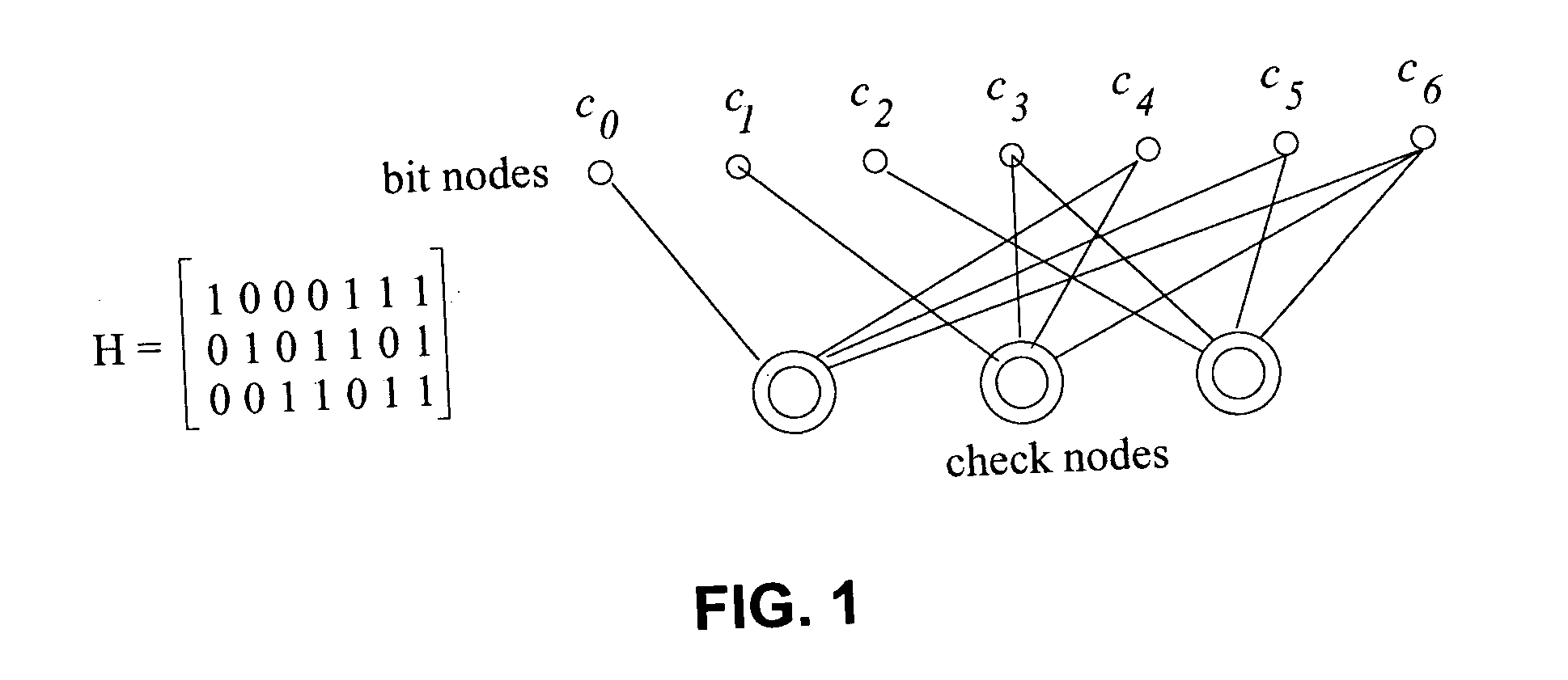Method for constructing finite-length low density parity check codes
- Summary
- Abstract
- Description
- Claims
- Application Information
AI Technical Summary
Benefits of technology
Problems solved by technology
Method used
Image
Examples
Embodiment Construction
[0009]FIG. 1 depicts an illustrative parity check matrix for an irregular low density parity check (LDPC) code. As mentioned in the background, an LDPC code is a linear block code specified by a very sparse parity check matrix. The parity check matrix P of a regular (n, k, s, t) LDPC code of rate r=k / n is a (n−k)×n matrix, which has s ones in each column and t>s ones in each row where s<<n, and the ones are typically placed randomly in the parity check matrix. When the number of ones in every column is not the same, as shown in FIG. 1, the code is known as an irregular LDPC code.
[0010] An LDPC code with a parity check matrix can be represented by a bipartite graph which consists of two types of nodes—variable nodes and check codes. Each code bit is a variable node while each parity check or each row of the parity check matrix represents a check node. An edge in the graph is placed between variable node i and check node j if Pj,i=1; no parallel edges are allowed between a particular...
PUM
 Login to View More
Login to View More Abstract
Description
Claims
Application Information
 Login to View More
Login to View More - R&D
- Intellectual Property
- Life Sciences
- Materials
- Tech Scout
- Unparalleled Data Quality
- Higher Quality Content
- 60% Fewer Hallucinations
Browse by: Latest US Patents, China's latest patents, Technical Efficacy Thesaurus, Application Domain, Technology Topic, Popular Technical Reports.
© 2025 PatSnap. All rights reserved.Legal|Privacy policy|Modern Slavery Act Transparency Statement|Sitemap|About US| Contact US: help@patsnap.com



